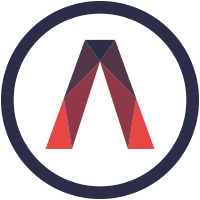Open-Source Software Saves District Over $100,000
by Christine McCormick-Liddle
 Software vendors pepper administrators’ phones with messages day in and day out trying to make a sale. Having been on the receiving end of incessant vendor calls, there is little unique on the market. Most software does one thing particularly well, but because it is commercialized and not district-specific, it is essentially fitting a round peg into a square hole. Vendors promise to work with your student information system, only to find out integration comes in the form of an SFTP upload to retrofit your data into a form the vendor can consume. Therefore, schools scramble to put something together quickly to fill gaps if there’s anyone knowledgeable enough to take on such an endeavor.
Software vendors pepper administrators’ phones with messages day in and day out trying to make a sale. Having been on the receiving end of incessant vendor calls, there is little unique on the market. Most software does one thing particularly well, but because it is commercialized and not district-specific, it is essentially fitting a round peg into a square hole. Vendors promise to work with your student information system, only to find out integration comes in the form of an SFTP upload to retrofit your data into a form the vendor can consume. Therefore, schools scramble to put something together quickly to fill gaps if there’s anyone knowledgeable enough to take on such an endeavor.
Zach VanderVeen and Chris Rose, two former teachers turned IT pros at Hamilton City Schools, recognized that they had the talent and were willing to invest the time to build scalable innovative software not only for their district but others. Zach and Chris constructed a vision, built a plan, started coding and shortly thereafter Abre graced the web. They weren’t software developers building a solution for educators; they were educators building a solution for educators. The solution solves common problems we encounter as educators where staff go to five different places daily to do their jobs and have little time to invest in learning something new. Because Zach collaborates with a group of innovators in the Cincinnati area, including me, he understands what collectively plagues us and what functionality has a larger reach.
 Abre translates to “open” in Spanish, appropriate for software built with the intention of entering into a General Public License (GPL/GPU). Abre, the brainchild of Chris and Zach, uses Google’s Material Design to ensure users interact with a visually appealing and intuitive interface. So, that’s the graphical user interface (GUI), what about what’s under the hood? Abre does whatever you want it to do because it’s a framework capable of immense scale. The architecture is modular based, meaning it is plug and play. Do you want the Staff Directory module? No problem, select it and boom, you are good to go. Here’s what Zach and Chris have developed so far:
Abre translates to “open” in Spanish, appropriate for software built with the intention of entering into a General Public License (GPL/GPU). Abre, the brainchild of Chris and Zach, uses Google’s Material Design to ensure users interact with a visually appealing and intuitive interface. So, that’s the graphical user interface (GUI), what about what’s under the hood? Abre does whatever you want it to do because it’s a framework capable of immense scale. The architecture is modular based, meaning it is plug and play. Do you want the Staff Directory module? No problem, select it and boom, you are good to go. Here’s what Zach and Chris have developed so far:
- Streams: a personalized communication module where users select topics of interest and that’s what is delivered to them. Each taking advantage of social likes and comments to create a robust online community.
- Staff Directory: A searchable staff directory with hidden information visible only to the Human Resources department.
- Curriculum: A module where staff can create or upload their curriculum maps
- eBooks: A reader so students and staff don’t have to install something new to read textbooks uploaded by the district.
- Assessments: A module capable of consuming data bank questions and coupled with the secure browser app offer a “locked-down” environment for summative assessments.
- Guided Learning: A module designed to tackle the distracted student, allowing teachers to add specific sites students can visit keeping them focused using a Chrome App.
- Class Overview: A module that interacts with the student information system and shows teachers charts of IEP students, gifted students, and ELL students in their classroom, recent absences. Teachers can click on a student in their class to see their profile, schedule, attendance, testing, and discipline.
- Coming soon: personal learner profiles with professional development suggestions, Twitter streams, and gamified courses.
 I developed a module for our Forest Hills district that allows students to register their BYOD devices, interfacing with a different database than that which is installed with Abre. Because the software is open source, you can modify it to make it what you want. Chris and Zach still work for their district, Hamilton City Schools, and Chris develops solutions for his district full time. Hamilton City Schools educates 10,055 students, the 16th largest in Ohio. The software, designed out of need, is currently saving Hamilton City Schools over $120,000.
I developed a module for our Forest Hills district that allows students to register their BYOD devices, interfacing with a different database than that which is installed with Abre. Because the software is open source, you can modify it to make it what you want. Chris and Zach still work for their district, Hamilton City Schools, and Chris develops solutions for his district full time. Hamilton City Schools educates 10,055 students, the 16th largest in Ohio. The software, designed out of need, is currently saving Hamilton City Schools over $120,000.
How do Chris and Zach ensure their staff understand how to use the software? They test in-house prior to deployment and then the new functionality appears for the users. They watch the stats and if large groups of people are using it, it passes their litmus test. A primary tenet for both developers is to make the software simple to use, so the need to be developed is minimized. It’s another win in the education sector when there’s little time to get in front of teachers.
Interested in contributing to Abre or learning more? Abre’s site can be found at https://abre.io and their GitHub (code repository) can be found here: https://github.com/abreio. Get involved and help create a movement where software truly meets the needs of its users and if it doesn’t, tweak it so it does.
 There are a couple of important takeaways from Abre. First, anyone can take advantage of Abre and through community development, it will only get stronger. There’s a need for better and efficiently-tested software and by developing from the inside out, everyone wins… the district and most importantly, the user. Second, districts may want to consider pooling resources to employ a developer versus buying software from the metaphorical “big box” stores.
There are a couple of important takeaways from Abre. First, anyone can take advantage of Abre and through community development, it will only get stronger. There’s a need for better and efficiently-tested software and by developing from the inside out, everyone wins… the district and most importantly, the user. Second, districts may want to consider pooling resources to employ a developer versus buying software from the metaphorical “big box” stores.
Zach and Chris hope districts across the world take advantage of Abre, allowing educators to turn their back on poor and untested software. They are certainly onto something with Abre, and the price tag is perfect for education. If other quality software developers start contributing to Abre, everyone will move farther faster.
Author
Further Reading
- EdSurge – Should You Build Your Edtech Product From Scratch?
- EdTech – Google and Howard University Partner to Bolster Diversity in Computer Science
- TechnicallyDC – Blackboard wants you to hack its learning management system


